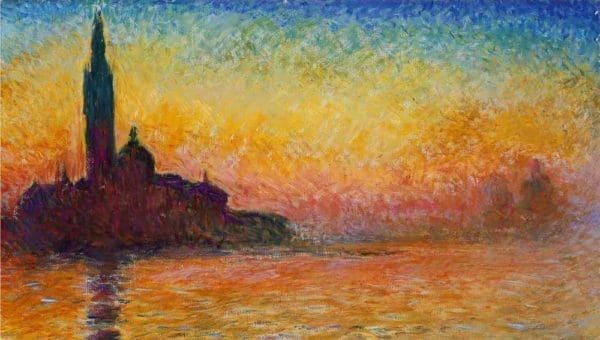 One of the great things about being a retired museum and art gallery CEO is that you know most of the basic tricks of the trade. For instance, you can get a very quick gauge of an exhibition’s successes and high points by talking with the gallery security staff.
One of the great things about being a retired museum and art gallery CEO is that you know most of the basic tricks of the trade. For instance, you can get a very quick gauge of an exhibition’s successes and high points by talking with the gallery security staff.
So as soon as we had paid £18 each for our tickets, I went straight to the tall young guard at the exhibition’s entrance. “What’s so special about this Monet show, from your perspective?” I asked about the exhibit at the National Gallery in London, which continues until July 29.
“Well, people are really noticing the number of pictures from private collections that have never been shown in public before. And they are getting a different sense of the artist. He painted a lot of buildings multiple times; he didn’t just paint nature.”
I smiled my appreciation as my wife and I headed into the first of seven connected galleries full of Monets. In 86 years of life, Monet (1840 to 1926) painted hundreds of countryside scenes in his native France, and became known for his fascination first with the effect of fog and pollution on landscapes, and then the play of light on his subject matter over the range of the day.
For many aficionados of his work, Monet was the Impressionist who defined en plein air work that focused on the sandstone cliffs, sandy beaches and luxuriously treed mountainsides of the French countryside. His final years of painting in his home village of Giverny, roughly halfway between Paris and Rouen on the river Seine, featured dozens of canvases of the Japanese bridge he built over a magnificent water lily pond in his garden.
What the exhibition focuses on, however, is a lifelong fascination that Monet had with architecture. This focus in fact spanned 50 of Monet’s 60 years as an artist, from 1860 until the early 1910s. Walking through this exhibition, you see the artist’s fascination develop with the play of light on human structures, and you see the decline of his visual acuity as he ages. To start with, the rural houses, bridges, churches and city streets are strongly defined in clean lines; as his vision begins to fail, the blurring of architectural edges becomes more evident – even normal.
From the start of his works on architecture, Monet used built forms to frame the canvases. Typically a metal train bridge arches horizontally across the canvas, with piers framing either side of the field of vision. Underneath the elevated bridge deck is often the natural horizon, with a river or lake fringed with trees and fieldscapes. Typically you see the built world first, often with smokestacks belching soot into the sky. Secondarily, and somewhat removed although waiting to be discovered, is nature.
Moving through the galleries, you quickly begin to appreciate how Monet returned again and again to buildings that caught his attention earlier in his exploration of French architecture. The Rouen Cathedral is a classic case in point.
The five large Rouen canvases show the same architecture from three first floor viewpoints that he rented in local shops across the street from the cathedral in 1892 and 1893. There are 30 canvases in this series and, intriguingly, all are dated 1894. This is probably because they were all taken home to Giverny for finishing.
The five Rouen cathedral paintings in the National Gallery exhibition all feature great studies of light, ranging from mid-morning, to mid-afternoon, to dusk. The massive spire of the cathedral disappears off the upper edge of most of the paintings, and the façade displays ranges of shadow, blasting clear sunshine and moody blue evening sky. Each of the canvases lacks conspicuous form-line clarity. The edges of the great building are soft to indistinct, as the grey tones of stone betray the artist’s failing vision. He certainly makes no attempt at the distinctness of form characterizing his architectural paintings of the late 1860s and 1870s.
The final paintings in the exhibition feature London and Venice in the early 1900s, before Monet decamped almost permanently to Giverny in his retirement. These canvases are described as floating “abandoned and dream-like, above the water,” in the exhibit guide, revealing architectural moods hinted at in the earlier Rouen paintings.
By this point in his career, he was painting human constructions as if they were a natural landscape – nature had become the built environment in his mind.
Troy Media columnist Mike Robinson has been CEO of three Canadian NGOs: the Arctic Institute of North America, the Glenbow Museum and the Bill Reid Gallery.
The views, opinions and positions expressed by columnists and contributors are the author’s alone. They do not inherently or expressly reflect the views, opinions and/or positions of our publication.


